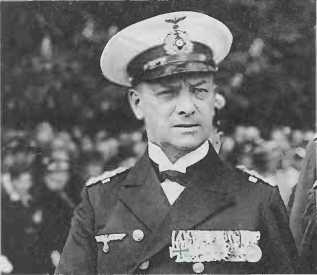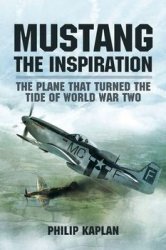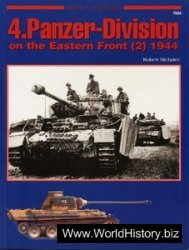
Rabaul campaign (1942-45). On January 23 1942 Japanese forces captured the port of Rabaul on the island of New Britain, Bismarck Sea. Building five airfields and exploiting the best natural harbour in the region, Japan dominated the skies and seas over New Guinea, the Solomons and the surrounding oceans. The capture or neutralization of Rabaul was a major priority for the Allies but it was anticipated that a direct amphibious attack held little chance of success. However, by October 1943 a strategy was agreed by which Rabaul would be isolated by the capture of the surrounding islands and the construction of air bases. This series of operations, the “Elkton” Plan, constituted an extended pincer movement. MacArthur’s forces in the Southwest Pacific Area were to advance northwards through Papua and New Guinea while Adm Halsey’s command, the South Pacific Area, was to deal with the Solomon Islands. On December 26 1943 American forces landed at Cape Gloucester on New Britain, allowing the construction of new air bases to strike at Rabaul. Meanwhile, on November 1, US Marines had assaulted Bougainville, the largest of the Solomon Islands. Now supported by their own powerful air forces, the landings continued in February and March 1944 and resulted in the capture of the northernmost islands in the Bismarck Archipelago, the St Matthias Group and the Admiralty Islands. Rabaul and its large garrison were now surrounded and were left to “wither on the vine.” MS.
Raborn, Vice Adm William Francis (b. l905). US. From 1955, headed team that developed Polaris ssBM, deployed early 1960s; head of cia, 1965-66.
Radar. Originally known as rdf (Radio Direction Finding), the system in which radio waves are broadcast and received back by echo to measure distance and bearing. Developed after 1940 as an aid to navigation, bomb aiming, submarine detection and air to air interception.
Radiation. Nuclear explosions normally emit 70-80 percent of their energy in electromagnetic radiation. The X-rays interact with the atmosphere to create the high-temperature fireball that itself emits “heat”, i. e. radiation in the ultraviolet, visible and infrared spectrum. Gamma rays remain, and together with neutrons provide the initial “nuclear radiation” effects of the weapon, causing radiation sickness among those who have suffered heavy exposures. Small weapons under about 10 kilotons in yield use the latter effect as their primary kill mechanism. In addition, nuclear fallout emits radiation from decaying fission products in the form of alpha and beta particles and gamma rays. This can be lethal, depending on the dose received. EJG.
Radio Counter Measures (RCM)
See ELECTRONIC WARFARE.
Rado, Sandor (1900-81). Hungarian Bolshevik, commissar under Bela Kun’s brief dictatorship in Hungary, March—August 1919. After its overthrow, escaped to Switzerland; ran “Rote Drei” spy network for Comintern, 1938-43.

Raeder: c-in-c Kriegsmarine, 1935-43
Raeder, Grand Adm Erich (18761960). Ger. Served in Liltzow, World War I, surviving her loss at Jutland. Promoted Adm in 1928, and became cns at a time when the German navy was using great ingenuity to circumvent the Versailles Treaty, including the pocket battleship type and the secret development of submarine designs. Raeder was made c-in-c Kriegsmarine, 1935. He planned to build up a navy adequate to challenge Britain by about 1944 (“Z Plan”) and was most upset by war breaking out in 1939. Despite its relative weakness, his navy performed well in the invasion of Norway but was left, crippled by losses, quite incapable of playing any serious part in an invasion of Britain. Raeder’s main interest was in his larger ships, the submarines being largely left to Ddnitz. Raiding into the Atlantic by the heavy ships ended with the loss of Bismarck and then the return of the ships at Brest to Germany. Thereafter they were moved to Norway to attack the Russian convoys. Hitler simultaneously insisted on extreme caution because of his fear of losses. Soon after the humiliation of the Battle of the Barents Sea in late 1942, Raeder resigned. At Nuremberg he was sentenced to life imprisonment but was released in 1955. CJWICD.
Rafa, Battle of (1917). As Ft Gen Chetwode’s Desert Column pushed the Turks back towards Palestine in late December 1916, they received reports that the enemy were preparing a substantial defensive position to the south of Rafa. Although concerned at operating with extended supply lines, it was decided to mount a raid with the Australian and New Zealand Mounted Division, together with support units. On January 9 1917, the Turkish positions grouped around a central redoubt were surrounded but heavy machine-gun fire at first slowed, and then halted the attack. Reports of approaching Turkish relief columns prompted Chetwode to order a withdrawal just as news arrived that New Zealand forces had captured the redoubt. The order was rescinded and victory was confirmed before the British troops disengaged, having taken 1,635 prisoners at a cost of 487 casualties. MS.
Railway gun. Artillery piece, usually a super-heavy siege weapon, mounted on a railway wagon. The largest was the 1,350-ton German 80cm “Gustav” Kanone, used at Sevastopol, 1942.
Ramcke, Lt Gen {General der Fallschirmtruppen) Hermann Bernhard (1889-1968). Ger. Commanding 2nd Paratroop Division in 1944, Ramcke, a dedicated Nazi, was personally ordered by Hitler to hold the port of Brest a outrance. In a siege beginning on




 World History
World History









